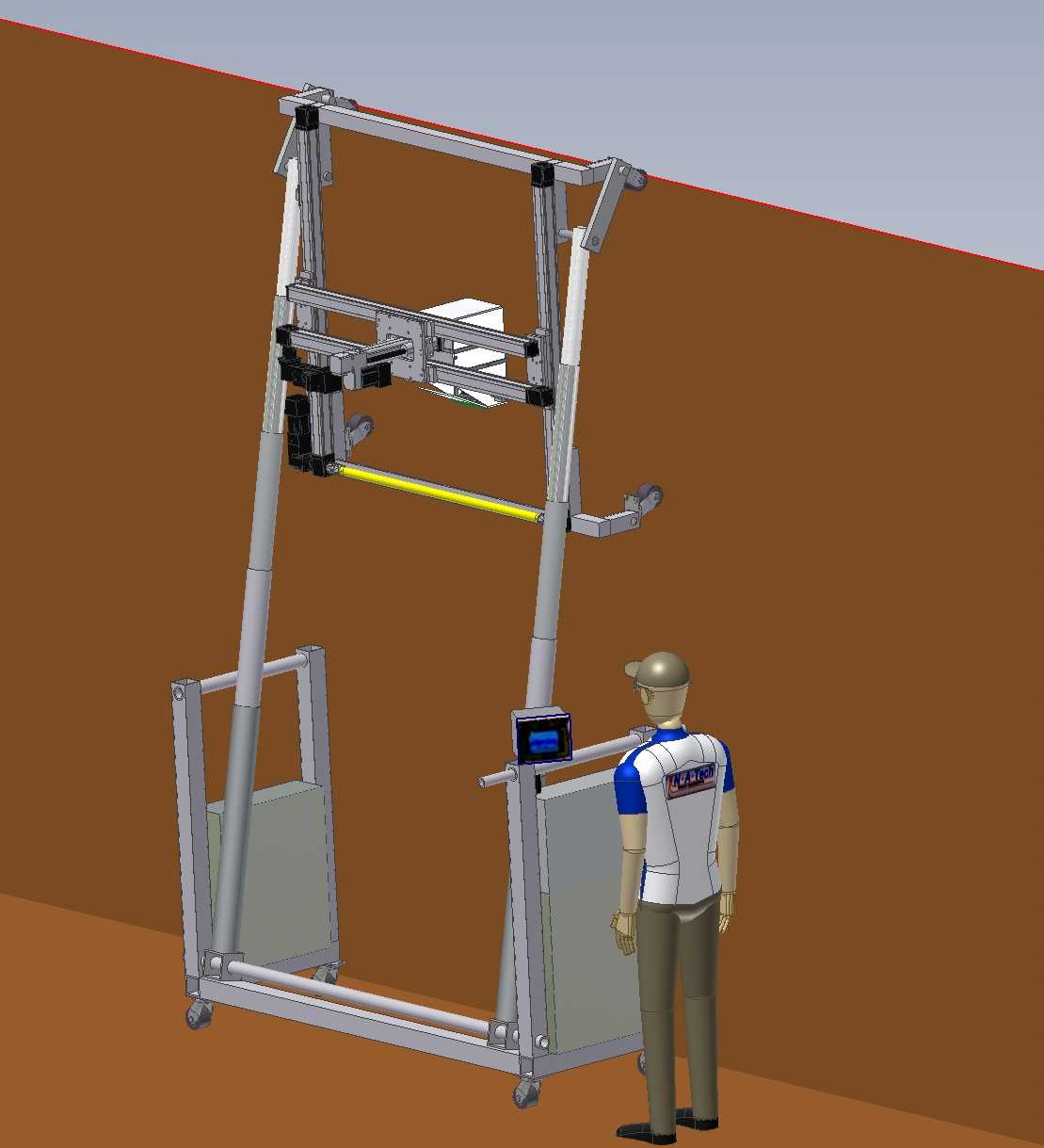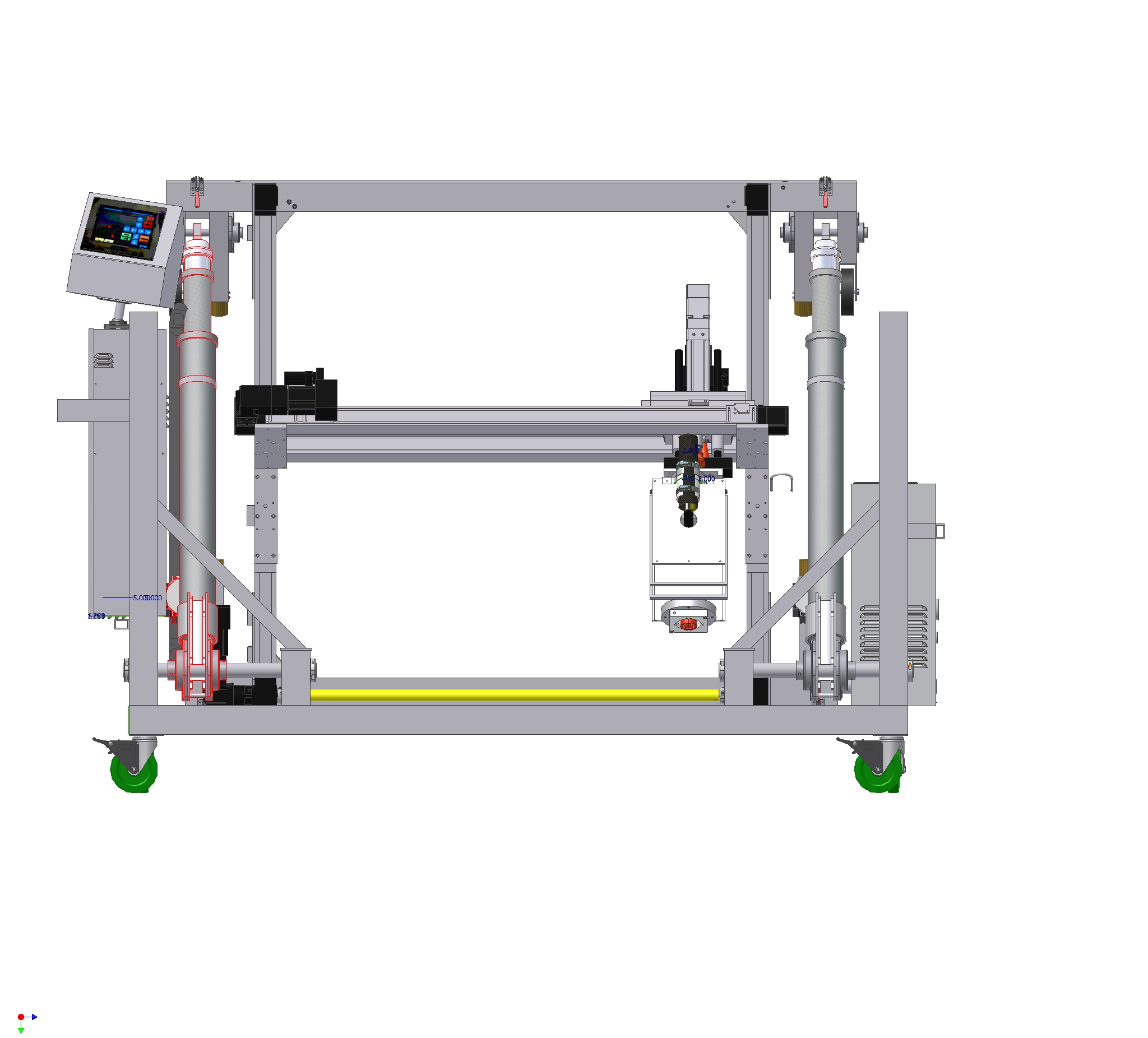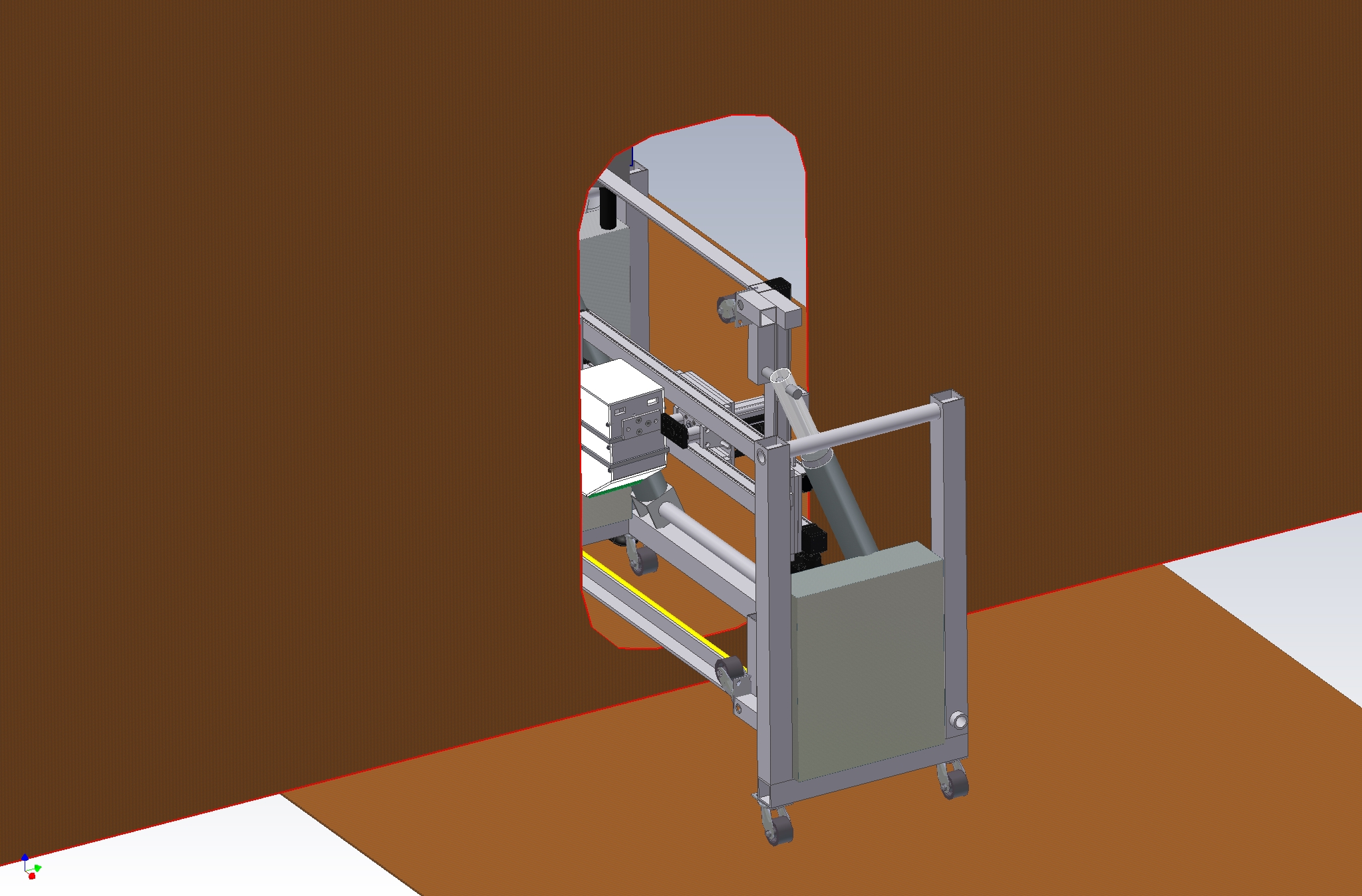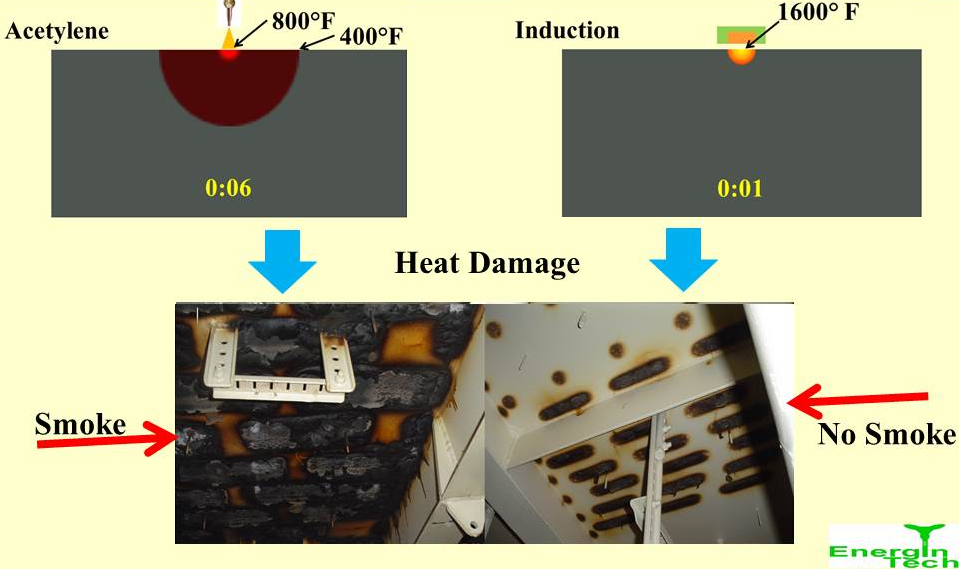|
|
PAS-BH™
Portable Automated Straightener for Bulkhead And Hull
PAS-BH™ was developed under an Navy Funded project through NSRP to automate the manual bulkhead and hull straightening process. Currently, acetylene torches are used to heat spots on the deck plate, then a water/air mixture is sprayed on to quench, creating shrinkage. This manual process is costly and time consuming and causes delays in schedules and reduces the availability of craftsmen needed for other jobs. PAS-BH™ scans an area of deck, decides how much thermal straightening is needed to bring that area into spec, then creates and runs that procedure to thermally straighten the deck, utilizing induction heating. PAS-BH™ automates and improves the process, straightening the plates as least twice as fast as the manual process, including set-up time.
It was designed to go thru 26" doors, reach up to 20 ft from where it is sitting using lifters, and attach to an MLE manlift so it can reach up to 100ft into the air to work on hulls without scaffolding.
If you have any questions of how our models and processes can help you please Contact Us.
|
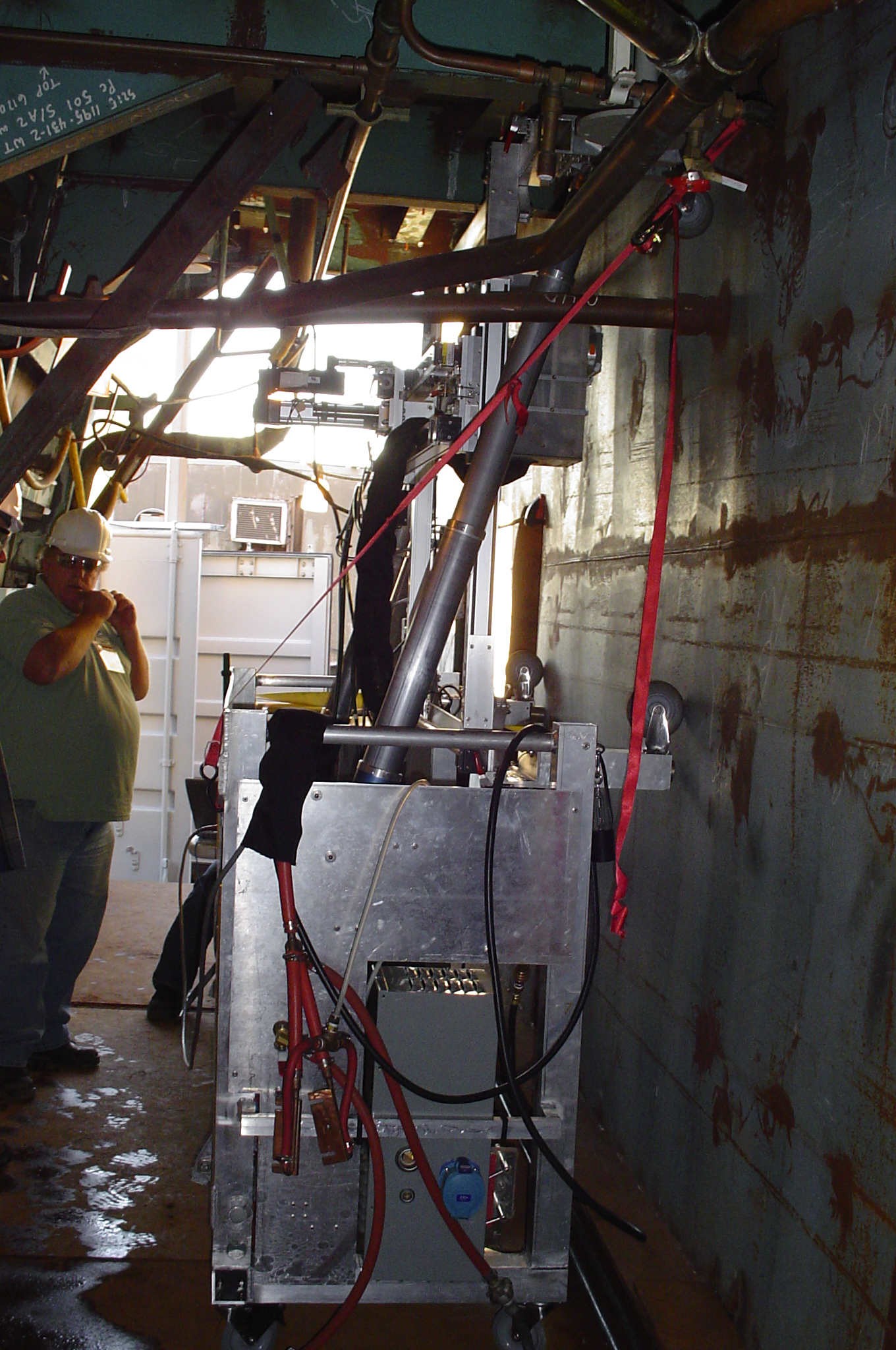
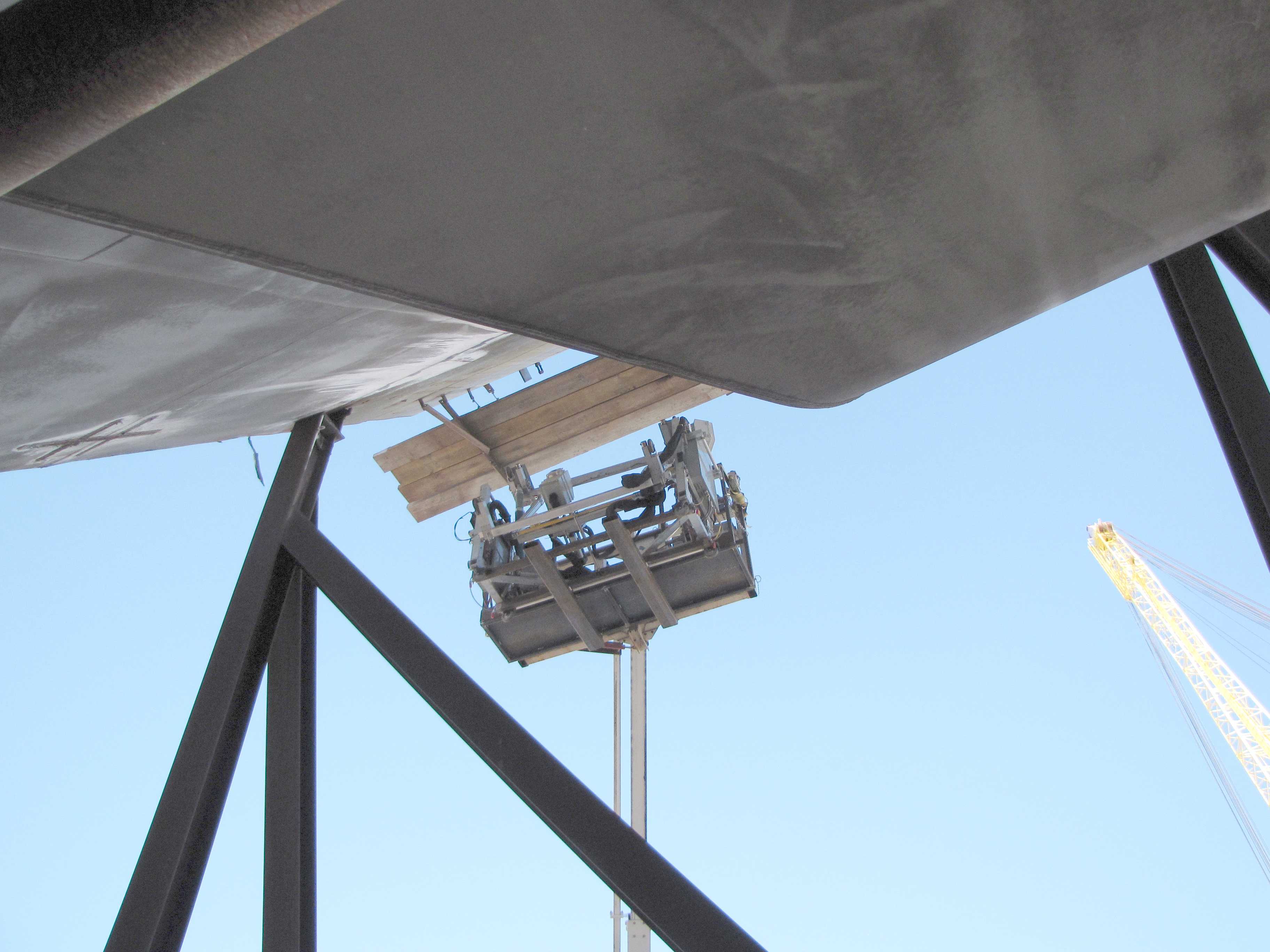
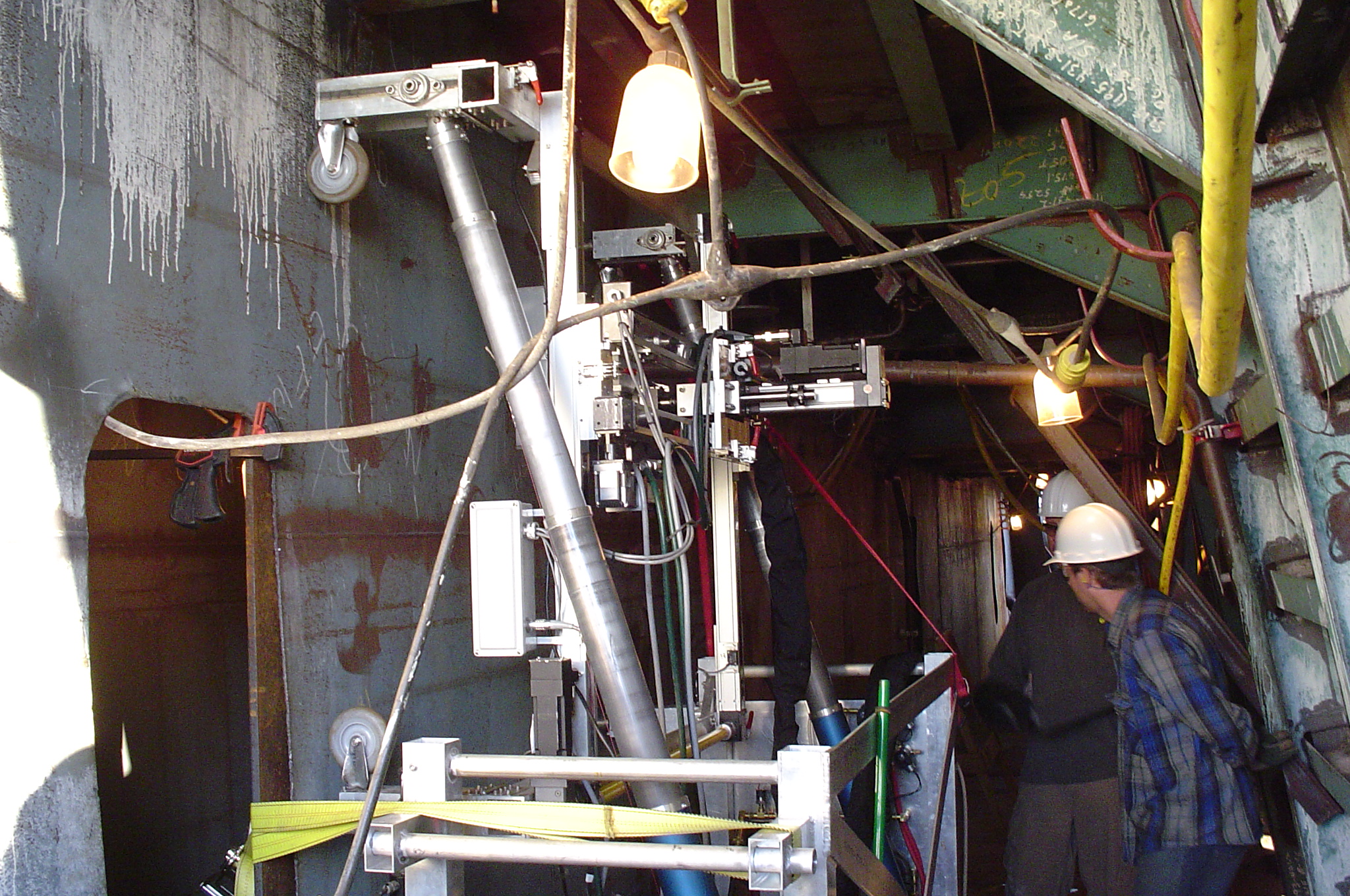
|
Health & Safety Benefits• No Gas Fumes, No Explosive Gases • Heat Not Radiated into Workspace • Worker Removed from Direct Heat • No Underside Paint Burning |
Cost Savings• 9 Month Return on Investment • Save $2,000 to $15,000 on Energy Costs per Year • 25% Reduction in Paint Repair Costs • No Fume Ventilation Costs |
Portable• Easy Assembly/Disassembly for Small Workspace Access • Pushcart Design for Quick Section to Section Straightening • Crane and Forklift Transport Design |
Better Straightening• Continuous Full-Time Operation • Optimized Heating Patterns • 2x Faster Straightening • Automatic Measurements |
Customizable• Choose the Size and Dimension that Best Fits your Application
|
|
The PAS-BH™ DifferenceReduced Damage, Toxic Smoke and Fire Danger
PAS-BH™ utilizes induction to quickly and efficiently heat into the steel late. Because of how quickly induction achieves the maximum critical temperature, heat does not time to disfuse into surrounding material. Therefore less damage is created in the surrounding material, thus reducing the fire danger, toxic smoke, and costly re-work.
|
|



